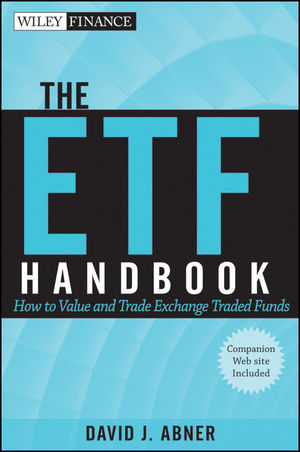The ETF Handbook: How to Value and Trade Exchange Traded Funds, + websiteISBN: 978-0-470-55682-5
Hardcover
272 pages
March 2010
 This title is out-of-print and not currently available for purchase from this site.
|
Acknowledgments.
Part One Introduction to the ETF Marketplace.
Chapter 1 Development of an ETF.
Market Access or Out-Performance?
Index Tracking or Actively Managed?
Underlying Assets.
Rebalancing and Index Changes.
ETF Basket.
Conclusion.
Chapter 2 Structure of an ETF.
Categorizing Exchange-Traded Products.
ETF Regulation.
Exchange-Traded Notes (ETNs).
Taxation.
When Structural Issues Arise.
Conclusion.
Chapter 3 Bringing an ETF to the Market.
Partnering with an Exchange.
Lead Market Maker.
ETF Incubation.
Comparing Fees by Structure.
Marketing and Launch.
Conclusion.
Chapter 4 Investment Companies, Now and in the Future.
In the Beginning, There Were Closed-End Funds.
Mutual Funds.
Actively Managed ETFs.
ETFs within the Portfolio.
Closing of ETFs.
Conclusion: The Future of ETFs.
Part Two Exchange- Traded Fund Valuation.
Chapter 5 ETFs with Domestic Constituents.
Calculating the Net Asset Value.
Discounts and Premiums.
Calculating the Intra-day Indicative Value.
Conclusion.
Chapter 6 ETFs with International Constituents.
International ETFs.
Providing Liquidity.
Conclusion.
Chapter 7 Fixed-Income and Currency ETFs.
Fixed Income.
Currency ETFs.
Conclusion.
Chapter 8 Leveraged, Inverse, and Commodity Products.
Introduction to Leveraged Products.
Understanding Inverse ETFs.
Commodity ETVs.
Conclusion.
Part Three ETF Trading and Execution.
Chapter 9 Trading Volumes and ETF Liquidity: Keys to Unlocking Value from the ETF Structure.
How is an ETF Different from a Stock?
A Brief Look at Equity Trading Volumes.
A Detailed Look at ETF Trading Volumes.
ETF Money Flows.
Conclusion.
Chapter 10 ETF Trading Business: Assessing and Providing Liquidity.
Trading Model.
Measuring Potential Available ETF Liquidity.
Requirements for an ETF Trading Business.
Conclusion.
Chapter 11: Execution: Handling Client Order Flow and Achieving Execution in ETFs.
Time Frames and Order Types.
Market Orders.
Limit Orders.
Algorithms.
Risk Markets (Utilizing Broker-Dealer Capital).
Creations and Redemptions.
Examples of Executions in the Market.
Conclusion.
Chapter 12: Market Participants and Their Trading Strategies.
Broker-Dealer Facilitation Desks.
Electronic Market Making.
Liquidity Aggregators.
Trading Strategies.
Conclusion.
Appendix A: List of ETF Issuers.
Appendix B: Research and Data Providers.
Appendix C: ETF-Related Web Sites and Blogs.
Appendix D: List of ETFs in Registration.
Notes.
About the Author.
Index.



